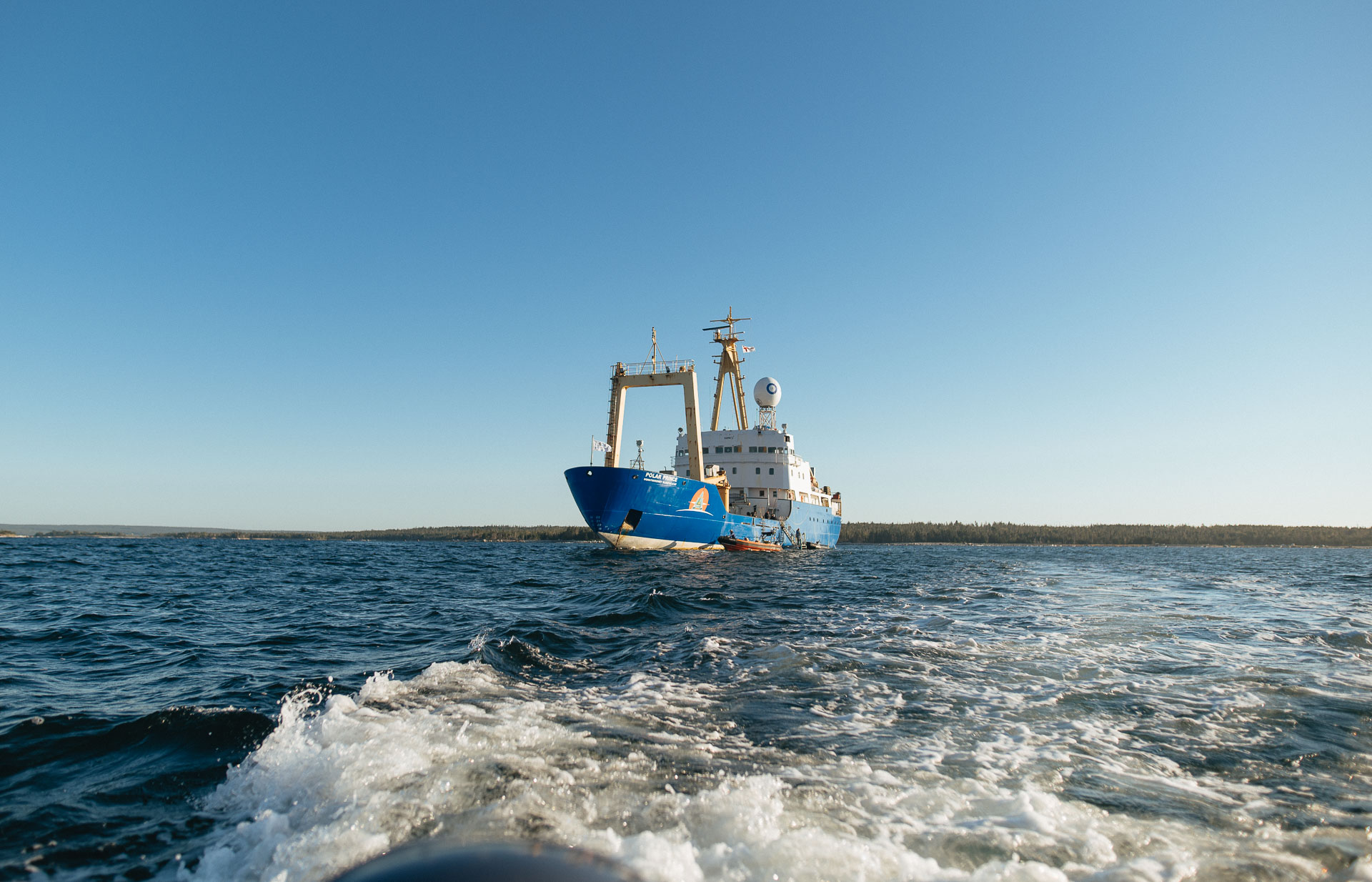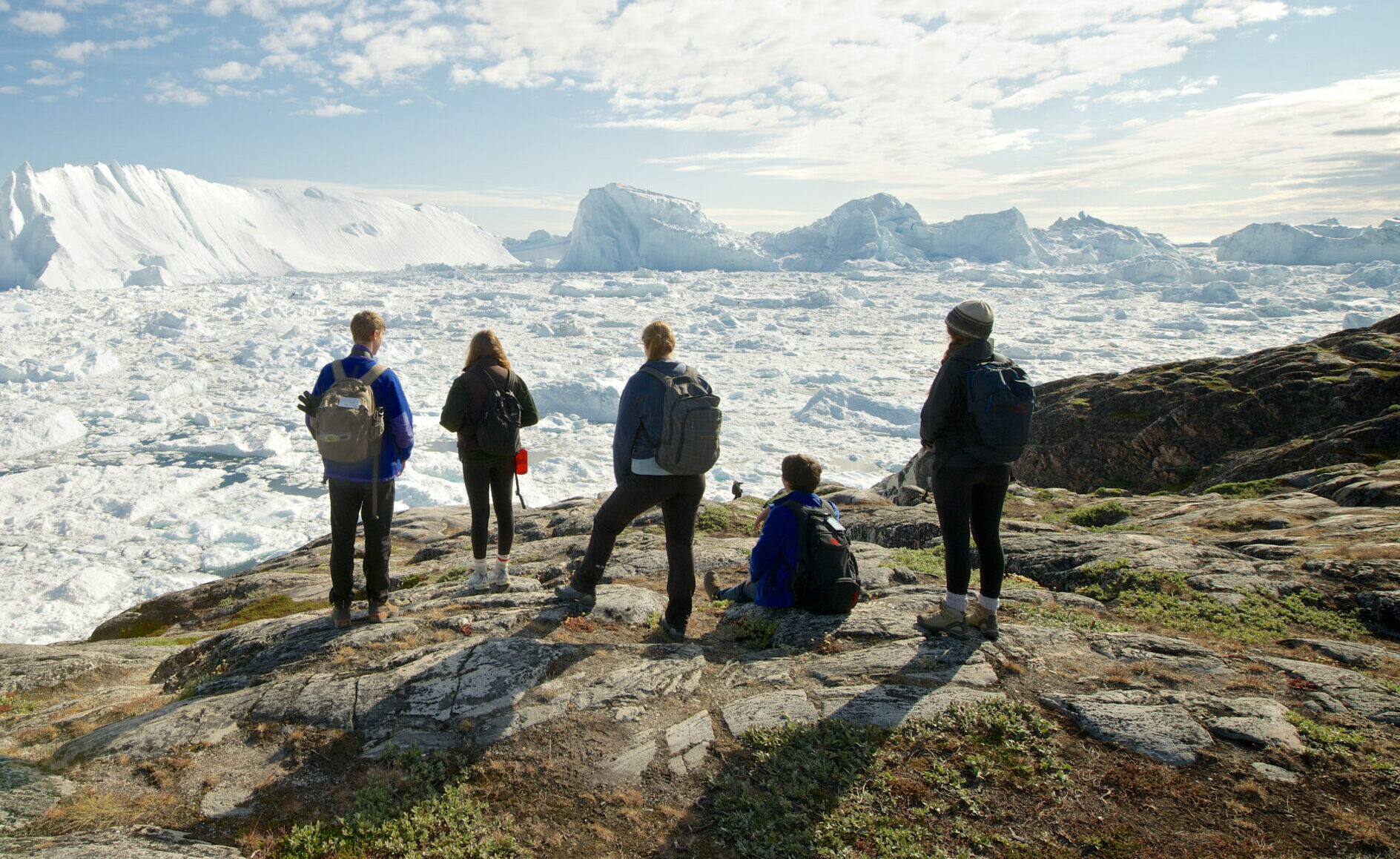Kalaallit Nunaat to Nunavut Expedition: Update Two
We arrived in Greenland the afternoon of August 2 to board the MV Ultramarine, our floating home for the next two weeks. We started our journey at the Kangerlussuaq Fjord, the longest fjord in Western Greenland. As we boarded the ship, we felt grateful to be on expedition and welcomed into Quark’s fold. We were also lucky to have an SOI alum on board! Kim, a zodiac driver and French expedition guide, initially travelled with SOI in 2016 and has since become a regular fixture on SOI expeditions. She and the other Quark staff worked to create an SOI hub in one of the lounges where we and other guests could gather, talk, and learn.

We travelled down the fjord all night and arrived in the morning at Sisimiut, the second-largest city in Greenland. A highlight from the town was participating in the Taste of Greenland event where we enjoyed trying local cuisine including staples of meat and fish. A group favourite was the mattaaq (beluga), eaten with aromat seasoning. We got a chance to learn more about the town on a walk led by Peter, a Quark staff member from Greenland. In the afternoon, some of the group wandered the hills around the town where we found crowberries, just one of the many varieties of wild berry that grow in Greenland and one that is often used in making jellies. We left Sisimiut with a greater understanding of Inuit culture in Greenland and how it differs from the Inuit of Canada, but also the ways in which cultural reclamation is taking place across the Arctic. Peter described how traditional tattoos were banned until 2009, but now more youth are getting tattoos. Many Inuit youth in our group have traditional tattoos as well and shared stories about their own culture. This shared understanding of the diversity of Arctic cultures has really enriched our little community on the ship.

Day 6 of the trip arrived, one that many of us had been excited about for some time: we were in Ilulissat, home to the Ilulissat Icefjord. This icefjord is where the Sermeq Kujalleq glacier calves ice into the sea. The combination of the ice sheet and the glacial calving is the only one seen outside Antarctica. We stood overlooking the icefjord in awe of nature’s power over this landscape and marvelled at how this environment is constantly moving and changing. Of course, as the calving happens faster than the ice of the Greenland Ice Sheet can build up, this ancient landscape becomes even more at risk.

In the afternoon, we set out on our first zodiac cruise to see the icebergs around Paakitsoq. Our guides, Yvonne and Steffen, taught us about how the melting of icebergs decreases the saline content in the water, potentially disrupting global ocean circulation patterns. Unbelievably, we were 20 metres away from an iceberg when it calved! It was a spectacular event and a testament to the sheer power contained in these glaciers.





